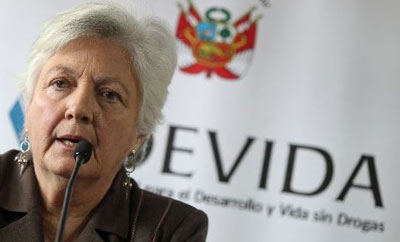The Peruvian government has set a target of 30,000 hectares of coca crops to be eradicated in 2014, a more than 30 percent increase on the record eradication registered in 2013, perhaps hoping to lose its recently acquired position as the world’s number one cocaine producer.
The target was announced on January 4 by the government’s National Commission for Development and Life without Drugs (Devida) and follows the eradication of 23,600 hectares of coca crops in 2013 — exceeding the 2013 target of 18,000 hectares by more than 30 percent, reported Los Tiempos.
SEE ALSO: Coverage of Coca
Much of the success seen in 2013 came as a result of large-scale eradication in the Upper Huallaga Valley, a key coca growing region. However, in announcing the new 2014 target, Devida’s president Carmen Mesias acknowledged that it could only be achieved by entering the VRAEM, the Apurimac, Ene and Mantaro River Valleys, an inhospitable collection of river basins which is the last remaining stronghold of the country’s Shining Path guerrilla insurgency.
InSight Crime Analysis
Peru is now the world’s primary producer of coca and cocaine, something Peruvian President Ollanta Humala may be seeking to redress through such ambitious targets.
His government — which came to power in mid-2011 — initially received strong criticism for its poor performance fighting drug production, with Humala’s original drug czar, Ricardo Soberon, attracting criticism from US officials for halting eradication efforts, until he was removed in January 2012.
Humala’s government has since won praise for its aggressive eradication efforts, which have been boosted by the apparent demise of the Shining Path in the Upper Huallaga Valley, allowing more effective government efforts in the area.
Overseeing eradication in the VRAEM poses a more significant challenge, with the Shining Path faction exercising considerable control over cultivation and trafficking. Peru does not allow aerial fumigation, as has been the mainstay of eradication in neighboring Colombia, placing manual eradicators at risk of attack from the guerrillas.
Peru’s outstanding eradication performance in 2013 came at the same time Colombia failed to hit its targets, after aerial fumigation was halted by guerrilla attacks. Nevertheless, Colombia still eradicated more than 70,000 hectares over the course of the year, meaning Peru will face an uphill challenge shaking off its status as the world’s primary coca producer should Colombia begin aerial fumigation again.

